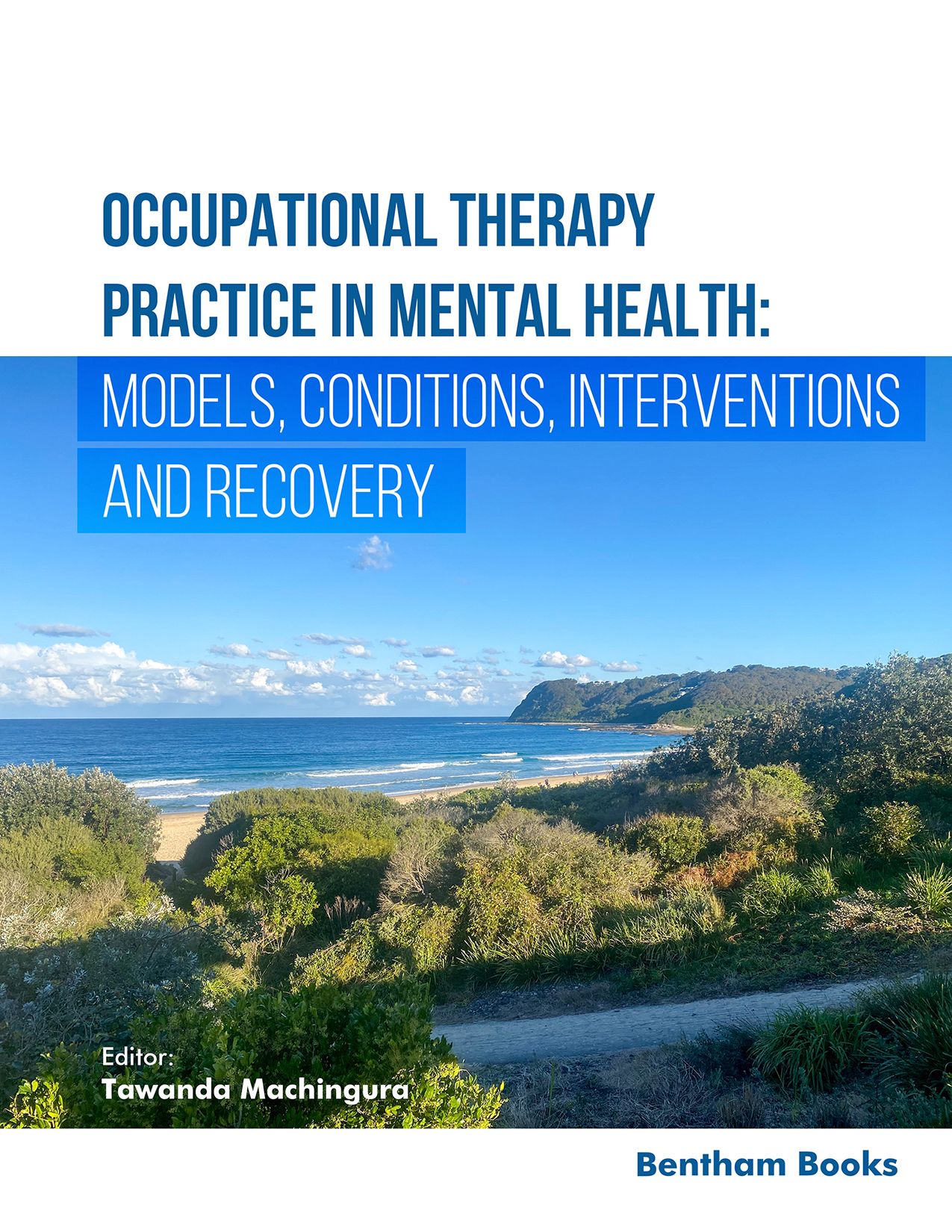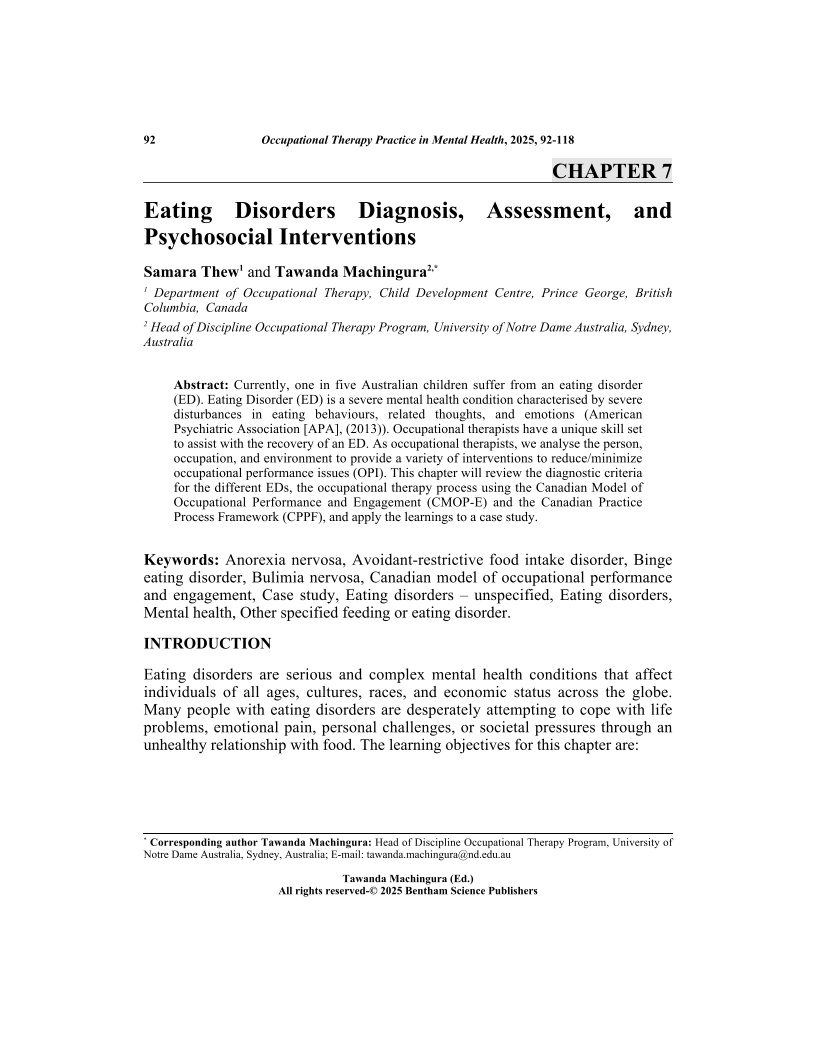Eating Disorders Diagnosis, Assessment, and Psychosocial Interventions

- Authors: Samara Thew1, Tawanda Machingura2
-
View Affiliations Hide Affiliations1 Department of Occupational Therapy, Child Development Centre, Prince George, British Columbia, Canada 2 Head of Discipline Occupational Therapy Program, University of Notre Dame Australia, Sydney, Australia
- Source: Occupational Therapy Practice in Mental Health: Models, Conditions, Interventions, and Recovery , pp 92-118
- Publication Date: October 2025
- Language: English
Eating Disorders Diagnosis, Assessment, and Psychosocial Interventions, Page 1 of 1
< Previous page | Next page > /docserver/preview/fulltext/9789815313710/chapter-7-1.gif
Currently, one in five Australian children suffer from an eating disorder (ED). Eating Disorder (ED) is a severe mental health condition characterised by severe disturbances in eating behaviours, related thoughts, and emotions (American Psychiatric Association [APA], (2013)). Occupational therapists have a unique skill set to assist with the recovery of an ED. As occupational therapists, we analyse the person, occupation, and environment to provide a variety of interventions to reduce/minimize occupational performance issues (OPI). This chapter will review the diagnostic criteria for the different EDs, the occupational therapy process using the Canadian Model of Occupational Performance and Engagement (CMOP-E) and the Canadian Practice Process Framework (CPPF), and apply the learnings to a case study.
-
From This Site
/content/books/9789815313710.chapter-7dcterms_subject,pub_keyword-contentType:Journal -contentType:Figure -contentType:Table -contentType:SupplementaryData105

